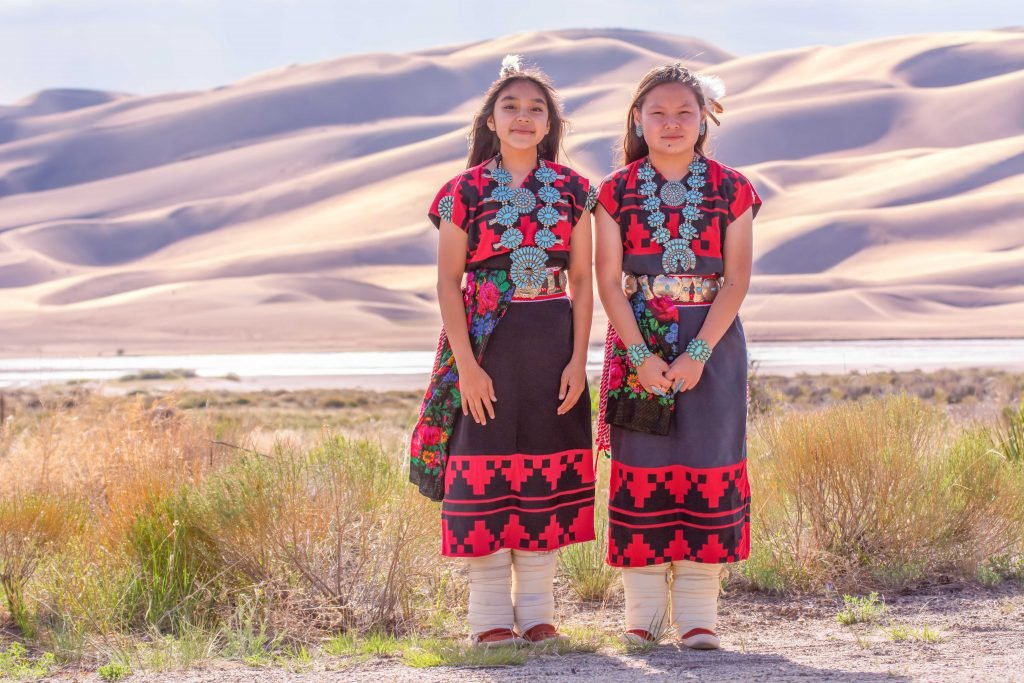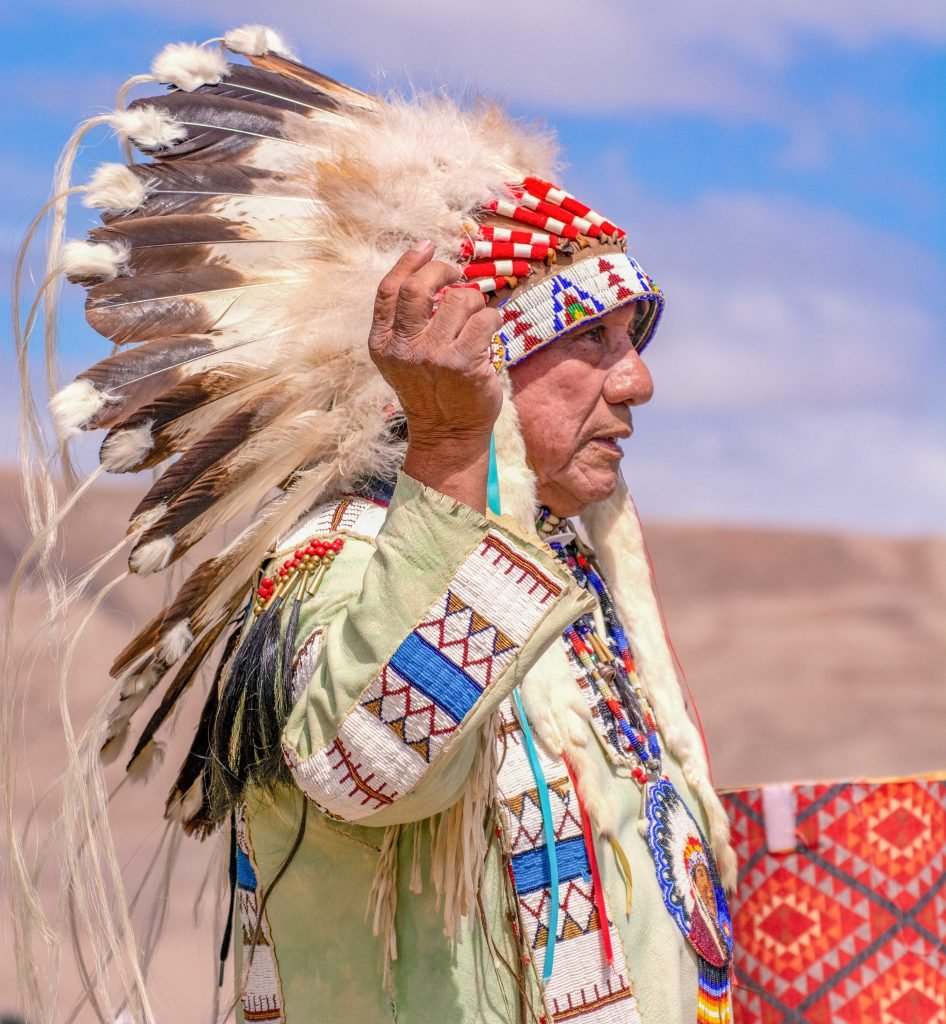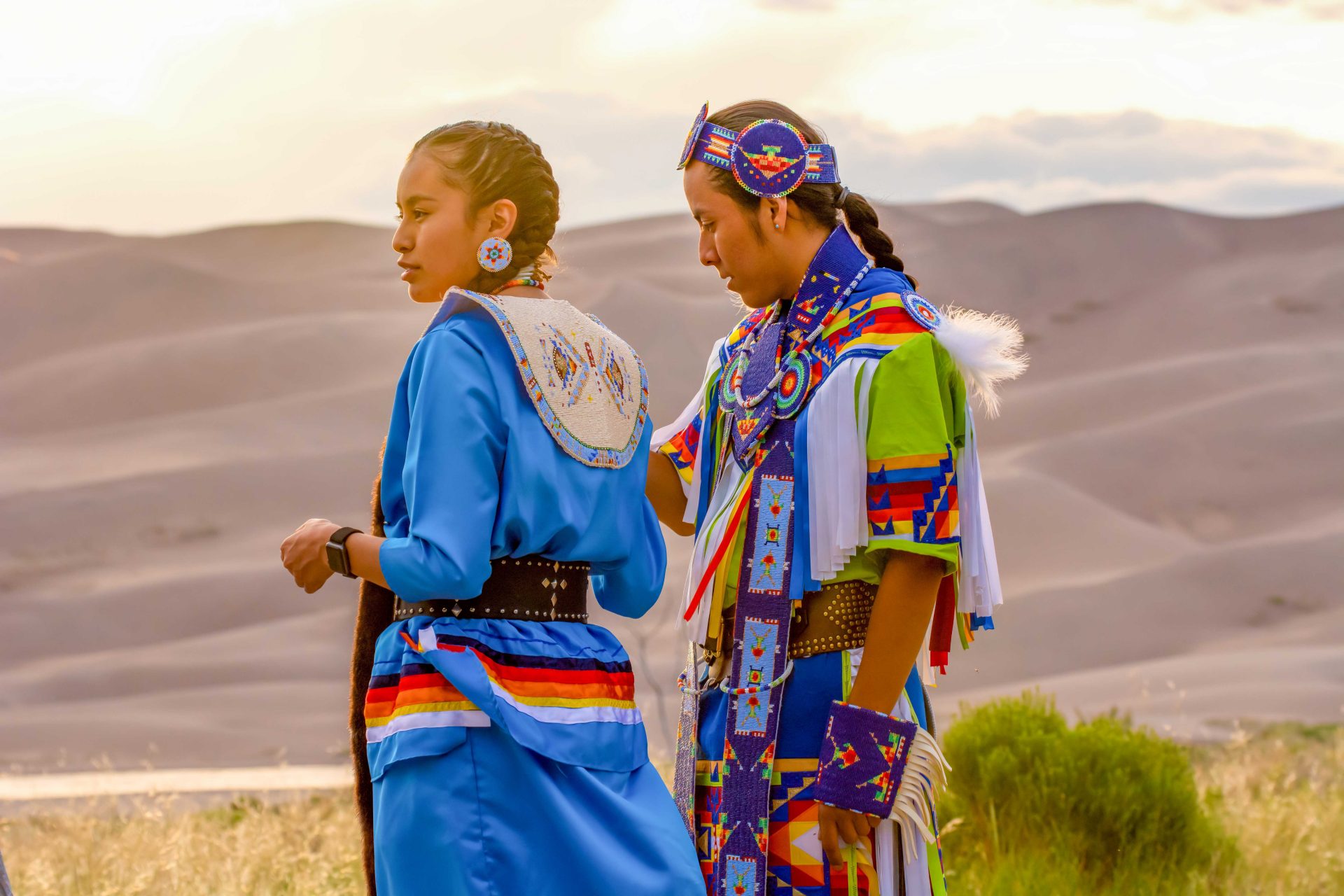By Daniel Hart.
Between the bones of the Earth and the whimsy of the wind and sky, there is a place some call So-wop-a-wat, “where the sand is” (Ute), some call Seinanyédi, “it goes up and down” (Jicarilla Apache), others call Tsé-whíz-hosh, “sand comes back down on you” (Navajo), and yet others call The Great Sand Dunes.
This place is a wonderland of surreal mountains of sand pressed up against majestic mountains of rock. It is a place of power. Throughout the American West, 18 Indigenous tribes identify the Great Sand Dunes as a traditional cultural property, including the Southern Ute, Ute Mountain Ute, Ouray and Uinta Ute, Hopi, Zuni, 11 New Mexico Pueblo tribes, Jicarilla Apache, and Navajo (Diné). Other tribes, such as the Cheyenne and Arapaho, spent time there as well.
The Ute people consider the Great Sand Dunes their ancestral home. As a result, their modern use and ways of thinking of the Great Sand Dunes holds little separation from the past in their minds. Cassandra Atencio, Southern Ute Tribal Historic Preservation Officer, said, “We have no migration story to this place. We have always been here. Our stories start here because this is where Creator put us in the beginning, unlike other people who came here later.” So for the Ute, the entire regional landscape, including the Great Sand Dunes, holds cultural significance.
The mountains and valleys and everything in between are how they marked place. An example of this is the name given to the section of the Sangre de Cristo Mountains that the Sand Dunes rest against. These were called “The Serpent’s Back” and Mount Blanca was “The Serpent’s Head,” referencing a time when the San Luis Valley was a lake, and the mountains rose out of the water like a serpent.

Photo: Patrick Myers/NPS
In terms of modern ceremonial use, the Great Sand Dunes are used by the Ute for some formal tribal ceremonies and many more individual ones by families who still go there to honor the land and collect sand and plants. These acts are ceremonial by their very nature and are part of everyday life for the Ute, rather than somehow a part of a separate, secular life.
There is no distinction. The tribe ensures that these traditions are carried on by bringing their young people to the Sand Dunes so they can connect to the place where the stories happened. Atencio made a point to say, “We are still a living people and in this contemporary world. We are still thriving and staying connected to those lifeways that brought us to where we are today.”
For the Navajo (Diné), the Great Sand Dunes are the “Boiling Sands” that figure prominently in their creation stories and provide a direct tangible link to their past. The Boiling Sands were the last of the four deadly obstacles to be overcome by the Warrior Twins on the journey to their Father, the Sun, in their quest to save humanity from giants. The sands were tamed by a song from Spider Woman.
The tamed sands are still visited by Navajo people when they come to Sisnaajiní, also known as Mt. Blanca, one of the four sacred peaks delineating the boundaries of their home land. According to Richard Begay, Navajo Nation Tribal Historic Preservation Officer, tribal members come to the Great Sand Dunes to make offerings and collect plants, minerals, and water. The sand is highly valued by the Navajo for creating sand paintings which are used in healing rituals. The sand paintings are viewed as living beings that take the imbalance or ailment from the person and transfer it to the painting, thereby curing the person.

The Jicarilla Apache also use the sand in sand paintings. These paintings are used in five different ceremonies including the Bear Dance and Four Directions ceremony. Bryan Vigil of the Jicarilla Apache Nation explained that the sand from the Great Sand Dunes is important because, “It was brought with great force or energy, and that’s why it’s sacred.
The wind took it there and made it real fine for us to use.” When the Jicarilla gather sand, they first ask Mother Earth if they may use it. The black magnetic sand is used for its black color and is especially powerful because it contains the power of the Earth’s poles. Vigil explained, “I asked the Grandpas years ago why we use the black sand, and it’s because of the magnetic poles and color. We can also pick it up with a magnet for our paintings. So that’s why it’s sacred. It’s very powerful. We’ve been using it for thousands of years.”
The Sand Dunes remain a symbol of their past and of important cultural traditions that tie them to the present and help maintain long-held traditions that will now persevere into the future. The Great Sand Dunes is a living, breathing, powerful place for the many tribes that consider it sacred. Over tens of thousands of years, wind brought trillions of grains of sand to the San Luis Valley, laying the grounds for enduring tradition.
It is hard to know at what point these sands became a living part of Native culture, but for the many affiliated tribes, it is a vital living link to their past and part of what sustains their cultural identity in the present, carrying them into the future.
Top photo: Two Jicarilla Apache tribal members gather for a cultural event at the Great Sand Dunes. Photo: Patrick Myers/NPS


